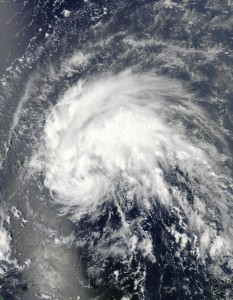 Like conflict and wars, typhoon Haiyan (local name Yolanda) destroyed basic services for food, water, health care and shelter in the Central Philippines. This disaster was declared a “Level 3” Emergency by the UN, meaning there’s substantial impact on the health of people and it can’t be managed by a country or region alone.
Like conflict and wars, typhoon Haiyan (local name Yolanda) destroyed basic services for food, water, health care and shelter in the Central Philippines. This disaster was declared a “Level 3” Emergency by the UN, meaning there’s substantial impact on the health of people and it can’t be managed by a country or region alone.
The WHO assessed the health needs to prioritize the delivery of essential health services and coordinate the arrival of international medical teams. Within the first 7 days, WHO deployed 78 doctors, epidemiologists, logisticians and other personnel using a Health Cluster, like our incident command structure, to coordinate national and international team efforts. WHO published a health cluster bulletin similar to a situation report on the response. Both survivors and responders are exposed to many health risks and conditions:
- injuries from the storm and during clean up
- critical health needs of the most vulnerable populations
- crowded shelters and unsanitary conditions increase the potential for spread meningitis, TB, norovirus, and acute respiratory illnesses
- tetanus and other wound infections
- water borne diarrheal illnesses such as E. coli, cholera, and dysentery
- diseases spread by mosquitoes such as dengue
- leptospirosis from contaminated water
- carbon monoxide poisoning from generators
- post-traumatic stress disorder and other behavioral health needs
- malnutrition and vitamin deficiencies
- vaccine preventable diseases, such as measles, from already low levels of vaccination
A key priority is setting up an early warning system to detect and respond to any outbreaks. Watching this international response highlights the key role public health and public health preparedness plays in responding to these disasters.









